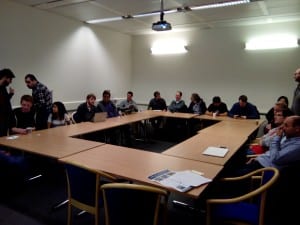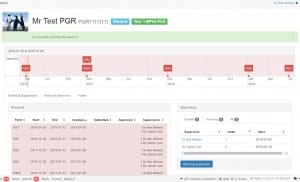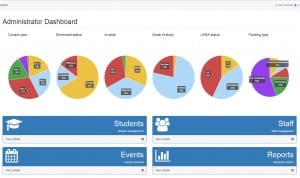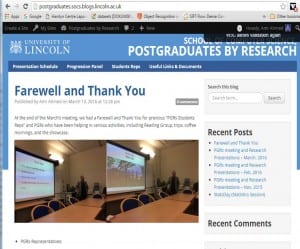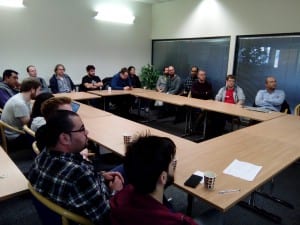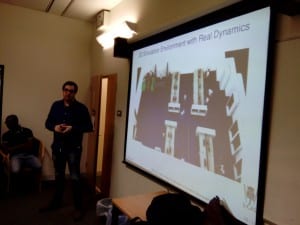The monthly PGR meeting was held at Room MC3108 at 14:00 on Wednesday, 12th October.
We had 2 speakers for this month seminar:
Speaker: Qinbing Fu
Title: Bio-inspired Collision Detector with Enhanced Selectivity for Ground Robotic Vision System
Abstract: There are many ways of building collision-detecting systems. We propose a novel collision selective visual neural network inspired by LGMD2 neurons in the juvenile locusts. Such collision-sensitive neuron matures early in the first-aged or even hatching locusts, and is only selective to detect looming dark objects against bright background in depth, represents swooping predators, a situation which is similar to ground robots or vehicles. However, little has been done on modeling LGMD2, let alone its potential applications in robotics and other vision-based areas. Compared to other state-of-the-arts,our major contributions are first, enhancing the collision selectivity in a bio-inspired way, via constructing a computing efficient visual sensor, and realizing the revealed specific characteristics of LGMD2. Second,we applied the neural network to help near range path navigation of an autonomous ground miniature robot in an arena. We also examined its neural properties through systematic experiments challenged against image streams from a visual sensor of the micro-robot.
Speaker: Xuqiang Zheng
Title: “A 5-50 Gb/s Quarter Rate Transmitter with a 4-Tap Multiple-MUX based FFE in 65 nm CMOS”
Abstract: We present a 5-50 Gb/s quarter-rate transmitter with a 4-tap feed-forward equalization (FFE) based on multiple-multiplexer (MUX). A bandwidth enhanced 4:1 MUX with the capability of eliminating charge-sharing effect is proposed to increase the maximum operating speed. To produce the quarter-rate parallel data streams with appropriate delays,a compact latch array associated with an interleaved-retiming technique is designed. Implemented in 65 nm CMOS technology, the transmitter occupying an area of 0.6 mm2 achieves a maximum data rate of 50 Gb/s with an energy efficiency of 3.1 pJ/bit.
The next seminar will be held in November. The date and venue for the next meeting will be announced.
